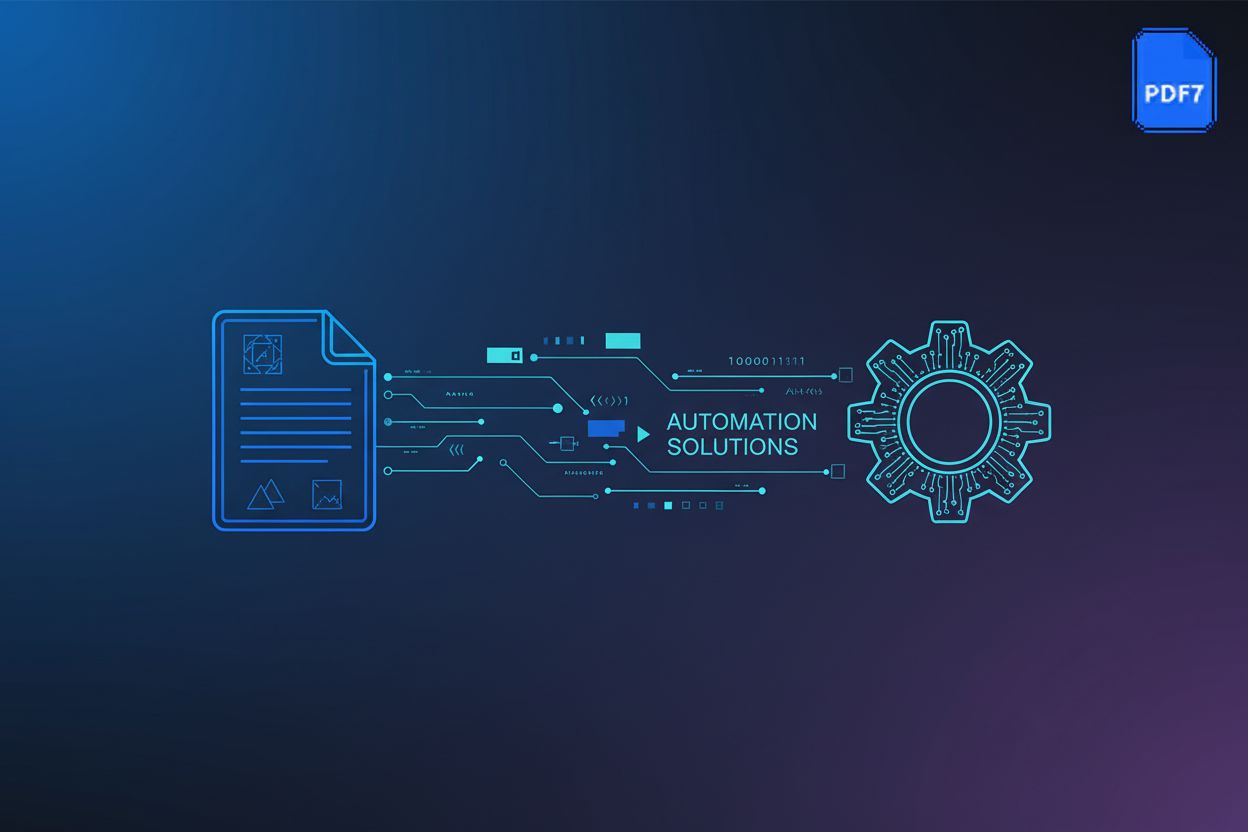Unlock Lightning-Fast Web PDFs: A Deep Dive into Linearization
Understanding PDF Linearization
Imagine waiting an eternity for a PDF to load – frustrating, right? PDF linearization is the solution, designed to deliver a smoother, faster viewing experience.
PDF linearization, also known as Fast Web View or Web Optimization, restructures a PDF so that the first page displays quickly in a web browser, even before the entire file downloads. Here's what it boils down to:
- Definition: Reorganizing a PDF's internal structure for faster web viewing.
- Goal: To enable the first page to display before the entire file downloads.
- Also known as: Fast Web View, Web Optimization.

So, how does this magic happen? Linearization rearranges the PDF data to prioritize the essentials. The "essentials" here are the objects and data needed to render the very first page and the document's overall structure, like a table of contents or index.
- Rearranges PDF data: Places the first page data and index at the beginning of the file.
- Creates a 'linear' data structure: This means the data is organized sequentially, like a book's pages, rather than scattered throughout the file. It contains references for the first page and other objects, making them easily accessible. Think of it like putting the most important chapter and the book's index right at the front, so you can start reading immediately.
- Enables streaming-like behavior: Allows users to interact with the first page while the rest downloads.
This "linear" structure allows the PDF viewer to grab the necessary information to display the first page almost instantly.
It's easy to confuse linearization with compression, but they serve different purposes.
- Linearization: Changes the file structure for faster online viewing.
- Compression: Reduces file size, but doesn't alter the loading order.
- Can be used together: Both improve PDF performance, but address different aspects.
While compression shrinks the overall file size, linearization optimizes how the file is delivered and displayed online.
Now that we understand the basics, let's delve into the technical details of how linearization works its magic.
Benefits of PDF Linearization for Web Optimization
Imagine clicking a link and waiting… and waiting… for a PDF to load. PDF linearization eliminates that frustration, offering numerous benefits for web optimization.
Linearization drastically improves the user experience by prioritizing speed and accessibility.
- Faster initial display: Users see the first page almost instantly. This immediate feedback is crucial for keeping visitors engaged.
- Reduced wait times: By loading the first page quickly, linearization increases engagement and reduces bounce rates.
- Direct Access: Users can jump to specific pages without fully downloading the entire document. This is particularly useful for large reports or manuals.
For example, a student accessing a textbook online can start reading immediately while the rest of the book loads in the background.
Beyond speed, linearization enhances accessibility, especially in challenging network conditions.
- Better performance on mobile devices: It is especially beneficial with limited memory or storage.
- Resilience to network interruptions: The viewing experience is more reliable, even with spotty connections.
- Improved loading on slower connections: Faster initial display even with slow internet speeds.
This is crucial in areas with limited bandwidth or for users on the go, ensuring they can access information without excessive delays.
Did you know that website loading speed is a ranking factor for search engines? Linearization helps improve your SEO.
- Faster loading times: Faster loading times are a ranking factor for search engines.
- Improved user engagement: Lower bounce rates signal quality content to search engines.
- Increased visibility: Easier access leads to more shares and backlinks, further boosting SEO.
By making PDFs more user-friendly, linearization indirectly contributes to better search engine rankings.
Linearization enhances loading speed and overall usability of PDFs, it’s a win-win for both users and website owners. Next, we'll explore the technical details of how PDF linearization works.
When to Use (and Not Use) PDF Linearization
Is PDF linearization always the right move? While it offers undeniable speed benefits, understanding when not to use it is just as crucial as knowing when to apply it.
Linearization shines when dealing with large PDF files. These are documents packed with text, high-resolution graphics, and embedded images. Think of detailed technical manuals, comprehensive financial reports, or extensive scientific publications. Linearization ensures users aren't stuck waiting for the entire behemoth to download before viewing anything.
- Large PDF files: Documents with lots of text, graphics, and images benefit most.
- Web-based systems: Linearization is essential for PDFs displayed in web browsers.
- Content marketing materials: Online guides, whitepapers, and reports gain from faster initial display.
Linearization is especially beneficial for web-based systems where PDFs are directly viewed in a browser. This is common in e-learning platforms, digital libraries, and online archives. By optimizing for web viewing, these systems provide a smoother, more responsive experience for users accessing documents on demand.
Consider content marketing materials like online guides, whitepapers, and in-depth reports. A potential customer is more likely to engage with content that loads quickly. Linearization can improve engagement and reduce bounce rates, making it a valuable tool for lead generation and brand awareness.
However, linearization isn't a silver bullet. For small PDF files, the benefits are minimal. Simple documents with just a few pages of text, like a basic invoice or a short memo, already load quickly. Applying linearization to these files offers negligible improvement.
- Small PDF files: Simple documents with minimal content don't need linearization.
- Non-web use: Email attachments, desktop access, and local storage don't require linearization.
- Single-page PDFs: These load almost instantly, rendering linearization unnecessary.
If PDFs are primarily used for non-web purposes, such as email attachments, desktop access, or local storage, linearization is unnecessary. In these cases, the files are typically downloaded fully before being opened, so the initial display speed isn't a critical factor.
Single-page PDFs are another case where linearization provides little to no advantage. Since the entire document consists of just one page, it loads almost instantly regardless of whether it's linearized.
Password-protected PDFs introduce another layer of complexity. Linearization might not function correctly, or it may require removing the password protection first. This is because the PDF viewer needs to access the initial pages and the cross-reference table to start displaying the document. If these are encrypted, the viewer can't access them without decryption, thus interfering with the linearization process.
- Password protection: Linearization might not work or require password removal.
- Security implications: Ensure security measures are in place after linearization.
- Best practice: Unlock, linearize, and protect again.
The ideal approach is often to unlock the PDF, linearize it, and then re-apply password protection. This ensures both optimal performance and necessary security.
Understanding these scenarios helps you make informed decisions about when to leverage the power of PDF linearization. Next up, we'll dive into the technical aspects of implementing linearization.
How to Linearize a PDF: Step-by-Step Guide
Ready to make your PDFs load in a flash? Let's walk through the simple steps to linearize your PDFs and dramatically improve the viewing experience.
Online PDF tools offer a quick and easy way to linearize your PDFs without needing to install any software. Several reliable options are available:
- Select a reliable online tool: PDF4me and AvePDF are popular choices that offer PDF linearization. These tools are designed for ease of use and efficiency.
- Upload your PDF file: Follow the tool's instructions to upload your document. Most platforms have a clear "upload" button or drag-and-drop area.
- Choose the 'Web Optimization' or 'Fast Web View' option: Start the linearization process. Look for options like "Optimize for Web" or "Fast Web View" (also known as PDF optimization), which indicates the linearization feature.
- Download the linearized PDF: Save the optimized file to your computer or cloud storage. Once the process is complete, download the file and replace the old version on your website.
For example, imagine a marketing team that needs to quickly optimize a batch of product catalogs for online viewing. By using an online tool like PDF4me, they can efficiently linearize these catalogs and ensure potential customers can view them instantly.
Dedicated software offers more advanced control and features for PDF linearization. Here are some popular options:
- Adobe Acrobat: Offers an "Optimize for Fast Web View" option. To access this, go to
File > Save As Other > Optimized PDF. In the dialog box, under "Settings," choose "Fast Web View." - Foxit PDF Editor: Provides linearization features. Foxit is known for its user-friendly interface and robust PDF editing capabilities. You can typically find this option under
File > Save AsorFile > Export, looking for "Optimize for Fast Web View" or a similar setting. - Advanced PDF Tools Command Line: For batch processing and automation. The command line tool is useful for developers who need to integrate PDF linearization into automated workflows. A typical command might look something like:
pdfopt -linearize input.pdf output.pdf.
After linearizing your PDF, it's essential to verify that the process was successful. Here’s how:
- Open the PDF in a text editor: Look for "Linearized" or specific linearization dictionaries at the beginning of the file. This is a quick way to check if the file structure has been modified.
- Test in a web browser: Check if the first page loads quickly before the rest. This ensures the primary goal of linearization is achieved.
- PDF Analysis Tools: Use specialized tools to check the internal structure of the PDF. These tools provide detailed information about the PDF's organization. For example, tools like
qpdfor online PDF validators can reveal the object structure and confirm if linearization markers are present.
By following these steps, you can ensure your PDFs are optimized for fast web viewing, providing a better experience for your users.
Best Practices for Web-Optimized PDFs
Did you know that optimizing your PDFs can be as crucial as optimizing your website's images? Applying best practices ensures that your PDFs are not only visually appealing but also load quickly and efficiently.
One of the most effective ways to optimize PDFs is by compressing images. Compressing images reduces the file size without significantly sacrificing quality. This is especially useful for PDFs with many high-resolution photos or graphics.
- Reduce file size: Smaller files load faster, improving user experience.
- Maintain quality: Use compression techniques that minimize visual degradation.
- Example: A real estate company can compress images in property brochures to ensure fast loading for potential buyers.
Choosing the right image format is crucial for balancing file size and image quality. Different formats are suited for different types of images.
- JPEG for photos: Ideal for photographs due to its efficient compression.
- PNG for graphics: Best for graphics with text, logos, or illustrations requiring sharp details.
- Example: A marketing agency preparing a client presentation would use JPEG for product photos and PNG for company logos.
Using only the necessary resolution for web viewing can significantly reduce PDF file size. High resolutions are often unnecessary for digital display and can bloat the file.
- Reduce unnecessary detail: Lower resolution for web viewing.
- Balance clarity and size: Find the optimal resolution for clear visuals without excessive file size.
- Example: A healthcare provider sharing informational pamphlets online can reduce the resolution of images to ensure quick access for patients.
Embedding fonts is vital for consistent PDF appearance across various devices. Without embedding, the PDF might display differently if the viewer doesn't have the required fonts installed.
- Ensure consistent appearance: Embedded fonts guarantee that the PDF looks the same on all devices.
- Use subsetting: Including only the characters used in the document reduces file size.
- Choose web-safe fonts: These fonts are widely available and minimize file size.
Adding and optimizing metadata improves SEO and searchability, making the PDF easier to find online. Relevant metadata helps search engines understand the content and context of the document.
- Add relevant metadata: Include title, author, and keywords.
- Optimize title and description: Make the document more appealing in search results.
- Use keywords: Help users find the document more easily.
By implementing these best practices, you can significantly enhance the performance and usability of your web-optimized PDFs.
Troubleshooting Common Issues
Is your PDF acting up after linearization? Don't worry, common issues can often be easily resolved with a few troubleshooting steps.
Sometimes, the linearization process doesn't go as planned. Here's what to check:
- Check for corruption: A corrupted PDF might fail to linearize properly. Use PDF repair tools to fix any underlying issues. For example, if a PDF contains damaged objects, the linearization process can be interrupted, leaving you with a non-linearized file.
- Ensure proper structure: The PDF must adhere to PDF standards for linearization to work. Verify that the PDF is correctly formatted and doesn't contain structural errors that could interfere with the process.
- Try a different tool: Not all linearization tools are created equal. If one tool fails, try another to see if it yields better results. Some tools have more robust algorithms or handle specific PDF complexities more effectively.
Editing a linearized PDF can sometimes undo the optimization. Keep these points in mind:
- Avoid incremental saving: This method can disrupt the linearized structure. Incremental saving appends changes to the end of the file, which breaks the optimized arrangement.
- Re-linearize after editing: Always re-optimize the PDF after making any modifications. This ensures the file is correctly restructured for fast web viewing.
- Use a tool that supports incremental linearization: If frequent edits are necessary, opt for a tool that can preserve the linearized structure while saving changes. This minimizes the need for constant re-linearization.
Not all PDF viewers and browsers fully support linearized PDFs. Here’s how to handle that:
- Older PDF viewers: These may not fully support linearized PDFs, resulting in slower loading times or display errors. Encourage users to update their PDF viewers for the best experience.
- Test with different browsers: Ensure consistent behavior across platforms. Some browsers handle linearized PDFs better than others, so thorough testing is essential.
- Provide alternative formats: Offer a non-linearized version for compatibility. This ensures that users with older systems or incompatible browsers can still access the content, albeit without the speed benefits of linearization.
Addressing these common issues will help ensure that your PDFs load quickly and reliably for all users.
The Future of PDF Optimization
The future of PDF optimization is here, promising even faster and more efficient ways to handle digital documents! What exciting advancements can we expect?
AI-powered optimization will bring intelligent algorithms for better compression and linearization. Imagine ai analyzing content to optimize PDFs with unparalleled precision.
Cloud-based solutions offer scalable and accessible PDF optimization services. Businesses can optimize PDFs without heavy infrastructure investments.
Integration with document management systems will provide seamless workflow for PDF optimization. This simplifies processes for industries like finance and healthcare.
PDF/A compliance ensures PDFs are suitable for long-term preservation. To follow best practices for combining PDF/A and linearization, ensure your chosen linearization tool also supports PDF/A standards or perform linearization after ensuring PDF/A compliance. This maintains the archival integrity while still optimizing for web delivery.
Linearization for archived documents improves accessibility and retrieval speed.
WCAG compliance ensures PDFs are accessible to users with disabilities. When creating accessible and linearized PDFs, prioritize using tools that offer both features. Look for options that allow you to tag content for screen readers before or during the linearization process. This ensures that performance and inclusivity go hand-in-hand.
With these advancements, PDF optimization will become more streamlined and user-friendly.





